Toskana |
|
|
|
| Übersicht – Contents: | |
Toskana |
|
|
|
| Übersicht – Contents: | |
Flaggen – Flags: |
|
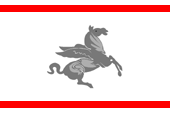 |
heutige Flagge der Toskana – todays flag of the Tuscany, Seitenverhältnis – ratio = 2:3, Quelle/Source: nach/by: Wikipedia (D) |
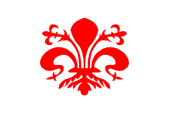 |
Flagge von Florenz – flag of Florence, Seitenverhältnis – ratio = 2:3, Quelle/Source: nach/by: Wikipedia (EN) |
historische Flaggen – historical Flags: |
|
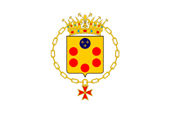 |
16.
Jhd. / 16th cent., Flagge des Herzogtums Florenz – flag of the Duchy of Florence Quelle/Source: nach/by: World Statesmen |
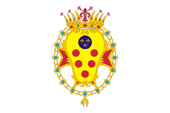 |
16.-18. Jhd. / 16th-18th cent., Flagge des Herzogtums Toskana – flag of the Duchy of Tuscany Quelle/Source: Wikipedia (D) |
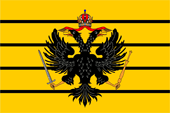 |
1737–
1765, Flagge Herzogtum Toskana – flag of the Duchy of Tuscany Quelle/Source: nach/by: Flags of the World, World Statesmen |
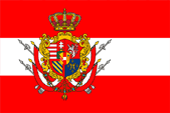 |
1765–1801, Flagge Großherzogtum Toskana – flag of Grand Duchy of Tuscany Quelle/Source: nach/by: Flags of the World |
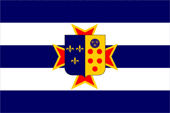 |
1801–1808, Flagge Königreich Etrurien – flag of the Kingdom of Etruria Quelle/Source: Flags of the World |
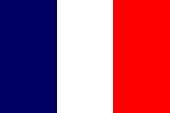 |
1808–1814, die Toskana gehört zu Frankreich – the Tuscany belongs to France |
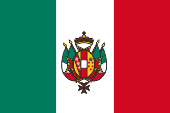 |
1848–1849, Flagge Großherzogtum Toskana – flag of Grand Duchy of Tuscany Quelle/Source: nach/by: Flags of the World |
 |
1814–1859, Flagge Großherzogtum Toskana – flag of Grand Duchy of Tuscany Quelle/Source: nach/by: Flags of the World |
Bedeutung/Ursprung der Flagge – Meaning/Origin of the Flag: |
|
| Die heutige Flagge der Toskana ist weiß mit zwei schmalen roten Streifen in der Nähe des oberen und unteren Randes. In der Mitte erscheint ein silberner Pegasus (geflügeltes Pferd). In der Zeit der Renanaissance, als Florenz eine bedeutende Metropole war unter dem Einfluss der Familie Medici, waren die Flaggen der Stadt ebenfalls weiß gewesen. Die beiden roten Streifen erinnern möglicherweise an die Zeit der Toskana als Habsburgisches Großherzogtum, als eine rot-weiß-rote Flagge verwendet wurde. Der silberne Pegasus geht auf eine Münze des Renaissance-Künstlers Benvenuto Cellini zu Ehren des Kardinals Pietro Bembo aus dem Jahre 1537 zurück. | The
current flag of Tuscany is white with two narrow red stripes near the top
and bottom of the flag. In the middle appears a silvery Pegasus (winged
horse). In the time of Renanaissance when Florence was an important city under the influence of the Medici family, the flags of the city also had been white. The two red stripes may remember the time of Tuscany as an Grand Duchy of the House of Habsburg, as a red-white-red flag was used. The silvery Pegasus goes back to a coin of the Renaissance-artist Benvenuto Cellini in honor of Cardinal Pietro Bembo from 1537. |
| Die ursprüngliche Heraldik aus der Zeit der Medici zeigte ab 1465 einen goldenen Schild mit fünf roten Kugeln und darüber eine blaue Scheibe mit drei goldenen Lilien. Dieses Wappen wurde auch auf weißen Flaggen verwendet. | The original Heraldry from the time of the Medici showed from 1465 a golden shield with five red balls and above a blue disc with three golden lilies. This coat of arms was even used on white flags. |
| Nachdem die Familie Medici 1737 ausgestorben war, kam die Toskana an das Haus Habsburg, und es wurde eine typische dunkelgelbe Flagge eingeführt, die vier schwarze Längsstreifen zeigte, ähnlich der Handelsflagge des Österreichisch-Habsburgischen Imperiums dieser Jahre. | After the Medici family extincted in 1737, the Tuscany came to the House of Habsburg, and it was introduced a typical dark yellow flag, which showed four black horizontal stripes, similar to the merchant flag of the Austro-Habsburg Imperium of this this years. |
| Im Jahre 1765 wurde jedoch zu einer für die österreichischen Habsburger typischen rot-weiß-roten Flagge gewechselt, die auch das Wappen der habsburgischen Toskana zeigte. | In 1765, however, the flag was changed to the for the Austrian Habsburgs typical red-white-red flag, which showed even the coat of arms of the Habsburg Tuscany. |
| In den Jahren von 1801 bis 1808 etablierte Napoleón in der Toskana das Königreich Etrurien unter den Spanischen Bourbonen. Es wurden in dieser Zeit blau-weiß gestreifte Flaggen mit einer Version des Wappens der Toskana verwendet. | In the years from 1801 to 1808 Napoleón established in the Tuscany the Kingdom of Etruria under the Spanish Bourbons. In this time were used blue and white striped flags with a version of the arms of Tuscany. |
| Nachdem die Toskana zwischen 1808 und 1814 von Frankreich annektiert war, wurde die alte rot-weiß-rote Flagge wieder eingeführt und bis zum Ende des Herzogtums im Jahre 1859 beibehalten. | After the Tuscany was annexed by France between 1808 and 1814, the old red-white-red flag was reintroduced and retained until the end of the duchy in 1859. |
| Von 1848 bis 1849 wütete in fast ganz Italien der Aufstand der Volksbewegung "Giòvane Itàlia" unter Mazzini und Garibaldi, die Monarchien waren oft kurz entmachtet, und in dieser Aufstandsphase wurden in den italienischen Staaten auch national-italienische Flaggen in Grün, Weiß und Rot verwendet. | From 1848 to 1849 raged in almost all of Italy the uprising of the people's movement "Giòvane Itàlia" under Mazzini and Garibaldi, the monarchies were often shortly disempowered, and in this rebellion-phase in the Italian States were often used national-italian flags in green, white and red. |
| Quelle/Source: Wikipedia (D), World Statesmen, Flags of the World | |
Wappen – Coat of Arms: |
|
 |
14.-15. Jhd. / 14th-15th cent., Wappen Familie Medici – coat of arms of Medici family, Quelle/Source: nach/by: www.heraldique.org |
 |
ab/from 1465, Wappen Familie Medici – coat of arms of Medici family, Quelle/Source: nach/by: www.heraldique.org |
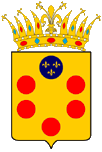 |
16.-17. Jhd. / 16th-17th cent., Wappen Herzogtum/ Großherzogtum Toskana – coat of arms Duchy/ Grand Duchy of Tuscany, Quelle/Source: nach/by: www.heraldique.org |
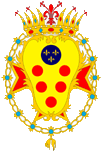 |
18.
Jhd. – 18th cent., Wappen Großherzogtum Toskana – coat of arms Grand Duchy of Tuscany, Quelle/Source: nach/by: Wikipedia (D) |
 |
1801–1808, Wappen Königreich Etrurien – coat of arms Kingdom of Etruria, Quelle/Source: nach/by: Wikipedia (D) |
 |
1814–1859, Wappen Großherzogtum Toskana – coat of arms Grand Duchy of Tuscany, Quelle/Source: nach/by: Wikipedia (D) |
Bedeutung/Ursprung des Wappens – Meaning/Origin of the Coat of Arms: |
|
| Das Wappen der Stadt und auch der bis 1531 existierenden Republik Florenz zeigte eine rote Lilie auf Silber. | The coat of arms of the city and the to 1531 existing Florentine Republic showed a red lily on silver. |
| Das Wappen der Familie Medici, die im Jahre 1531 Herzöge von Florenz wurden (Herzogtum Toskana), zeigte ursprünglich sechs rote Kugeln auf Gold, jedoch durfte die Familie mit Genehmigung des Französischen Königs im Jahre 1465 eine blaue Scheibe mit drei goldenen Lilien im Wappen führen. Dafür wurde eine der roten Kugeln entfernt und auch die Anordnung auf dem Schild ein wenig geändert. | The coat of arms of the Medici family, which became Dukes of Florence in 1531 (Duchy of Tuscany), originally showed six red balls on gold, but the family was allowed to use in the coat of arms – with the approval of the French king in 1465 – a blue disc with three golden lilies. For that one of the red balls was removed and the arrangement on the shield was changed a little bit. |
| Dieses Medici-Wappen wurde in Jahre 1531 zum Wappen der Herzogtums Toskana, und die Heraldik mit den fünf roten Kugeln und der blauen Scheibe mit den Lilien taucht immer wieder in den Wappen der Herrscher der Toskana auf, ganz gleich aus welchem adligen Hause sie kamen. | The
Medici coat of arms became in 1531 the coat of arms of the Duchy of Tuscany,
and the heraldry with the five red balls and the blue disc with the lilies
appears again and again in the arms of the rulers of Tuscany, from whatever
noble house they came. |
| Quelle/Source: Wikipedia (D), World Statesmen, www.heraldique.org | |
|
Historische Staaten in Italien – Historical states in
Italy:
|
|
| Landkarte/Map: Volker Preuß |
Zahlen und Fakten – Numbers and Facts: |
|
|
|
|
|
|
|
|
|
|
|
|
|
|
|
|
Geschichte: |
|
Antike
· Besiedlung durch die Etrusker, später zum Römischen Reich 406 · Eroberung durch die Westgoten 475 · die Toskana wird gotische Markgrafschaft 476 · Absetzung des letzten römischen Kaisers Romulus Augustulus, Ende des (West)Römischen Reiches, die Toskana gehört bis 493 zum Reich des Odoaker 535 · Eroberung durch Byzanz (Oströmisches Reich) 568/569 · Langobarden erobern die Toskana und gliedern sie ihrem Reich ein 774 · Eroberung durch die Franken, Eingliederung der Toskana als Markgrafschaft Tuscien in das Frankenreich der Karolinger 843 · bei der Teilung des Frankenreiches kommt die Toskana zum Königreich Italien 961 · der deutsche König Otto I. bringt die Toskana an das Deutsche Königreich 1115 · Aussterben der Markgrafenfamilie Canossa 12.–13. Jhd. · Erbteilung unter den Städten Florenz, Siena, Pisa, Lucca und Arezzo 14.–15. Jhd. · die Republik Florenz erringt die Vorherrschaft in der Toskana und bringt den größten Teil des Landes unter ihre Herrschaft (1351 Erwerb von Prato, 1361 Erwerb von Volterra, 1384 Erwerb von Arezzo, 1405 Erwerb von Pisa, 1441 Bündnis mit Lucca) 16. Jhd. · Aufstieg der Familie Medici 1531 · Alessandro von Medici wird vom deutschen Kaiser zum Herzog von Florenz erhoben (Herzogtum Florenz) 1557 · Florenz vergrößert sein Gebiet um die Republik Siena 1569 · der Papst erhebt Florenz zum Großherzogtum (Großherzogtum Toskana) 1737 · Aussterben der Medici 1738 · Friede von Wien, der Thron des Großherzogtums Toskana geht als Sekundogenitur an Habsburg-Lothringen 1799 · Einmarsch französischer Revolutionstruppen, Proklamation der 'Etrurischen Republik', Flucht des Großherzogs, Volksaufstand, Vertreibung der Franzosen, Rückkehr des Großherzogs 1800 · Schlacht von Marengo, Rückkehr der Franzosen 1801 · Frieden von Lunéville, Ende der habsburgischen Herrschaft, Napolèon errichtet in der Toskana das Königreich Etrurien unter den Spanischen Bourbonen; der Großherzog wird 1802 mit dem Herzogtum Salzburg abgefunden, 1805 mit dem Großherzogtum Würzburg 1808 · das Königreich Etrurien wird eingezogen und direkt mit Frankreich vereinigt 1814 · der Wiener Kongress errichtet das Großherzogtum Toskana 1815 · die Toskana wird um das Fürstentum Piombino, die Insel Elba, den Stato dei Presidi erweitert 1847 · Erwerb und Anschluss von Lucca 1859 · das Haus Habsburg-Lothringen wird abgesetzt 1860 · die Toskana schließt sich dem Königreich Sardinien-Piemont (ab 1861 Italien) an 1948 · Gründung der Region Toskana als Verwaltungseinheit |
History: |
|
antiquity
· settlement by Etruscians, later to the Roman Empire 406 · conquest by the Western Goth 475 · the Tuscany becomes a Margraviate of the Eastern Goth 476 · dismissal of the last Roman emperor Romulus Augustulus, end of the (West)Roman Empire, Tuscany belongs until 493 to the Empire of the Odoaker 535 · conquest by Byzantium (East Rome) 568/569 · conquest of Tuscany by the Langobardes and incorporation into their empire 774 · conquest by the Franks, the Tuscany gets incorporated as Margraviate of Tuscien into the Frankish Empire of the Carolingians 843 · at the division of the Frankish Empire the Tuscany comes to the Kingdom of Italy 961 · the German King Otto I. brings the Tuscany to the German Kingdom 1115 · extinction of the Margrave family of Canossa 12th–13th cent. · distribution of the heritage between the towns of Florence, Siena, Pisa, Lucca and Arezzo 14th–15th cent. · the Republic of Florence gains the predominance in the Tuscany and gets the largest part of the land under it's control ( 1351 acquisition of Prato, 1361 acquisition of Volterra, 1384 acquisition of Arezzo, 1405 acquisition of Pisa, 1441 alliance with Lucca) 16th cent. · rise of the Medici family 1531 · Alessandro de Medici is raised by the German Emperor to the Duke of Florence (Duchy of Florence) 1557 · Florence enlarges it's territory by incorporation of the Republic of Siena 1569 · the Pope raises Florence to a Grand Duchy (Grand Duchy of Tuscany) 1737 · extinction of the Medici 1738 · peace of Vienna, the throne of the Grand Duchy of Tuscany comes as Secundogeniture to the House of Habsburg-Lothringen 1799 · invasion of French revolutionary troops, proclamation of the 'Etruscan Republic' escape of the Grand Duke, popular uprising, expulsion of the French, return of the Grand Duke 1800 · Battle of Marengo, the French return 1801· Peace of Lunéville, end of the Habsburg rule, Napoleon establishes the Kingdom of Etruria in Tuscany under the Spanish Bourbons; the Grand Duke gets compensated in 1802 with the Duchy of Salzburg, in 1805 with the Grand Duchy of Wuerzburg 1808 · the Kingdom of Etruria gets dissolved and directly united with France 1814 · Vienna Congress, re-establish of the Grand Duchy of Tuscany 1815 · the Tuscany gets enlarged by the Principality of Piombino, Elba Island and by the Stato dei Presidi 1847 · purchase and annexation of Lucca 1859 · the House of Habsburg-Lothringen gets dismissed 1860 · the Tuscany joins the Kingdom of Sardinia-Piedmont (from 1861 Italy) 1948 · establish of the Tuscany region as an administrative unit |
| Quelle/Source: Wikipedia (D), Atlas zur Geschichte, World Statesmen |
Ursprung des Landesnamens – Origin of the Country's Name: |
|
| Der Name "Toskana" geht auf die Römer zurück. Sie bezeichneten die in dieser Gegend siedelnden Etrusker als "Tusci". Dieses Wort geht möglicherweise auf den Namen "Tyrrhener" zurück, den sich die Etrusker zu Ehren ihres Anführers "Tyrrhenos" einst gaben. | The name "Tuscany" goes back to the Romans. They called the Etruscans - who settled in this area as "Tusci". This word may go back to the name "Tyrrhenians", which the Etruscans once gave themselves in honor of their leader "Tyrrhenos". |
| Quelle/Source: Handbuch der geographischen Namen | |
Landkarte der
Regionen Italiens – Map of the regions of Italy: |
|
| Landkarte/Map: Volker Preuß |